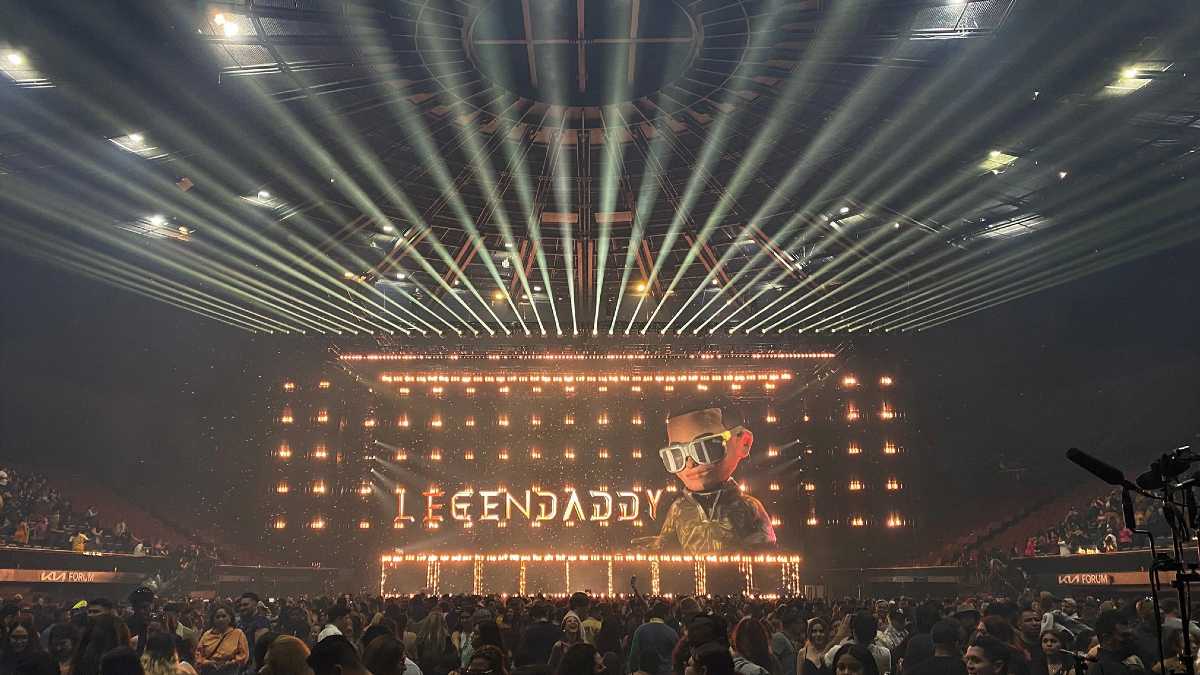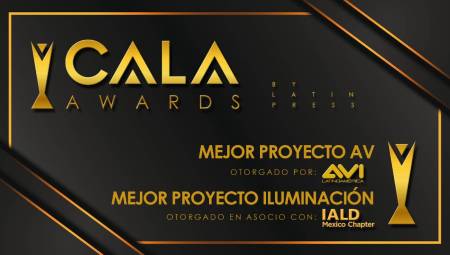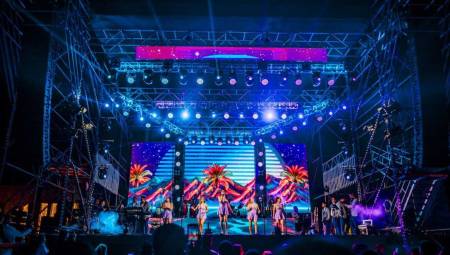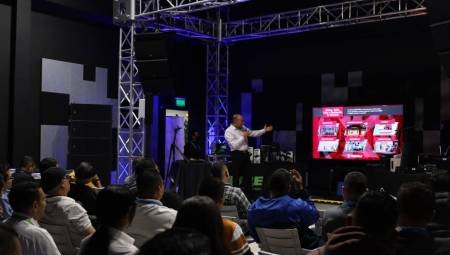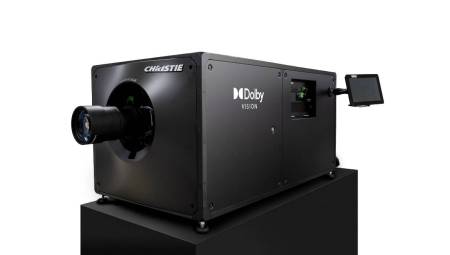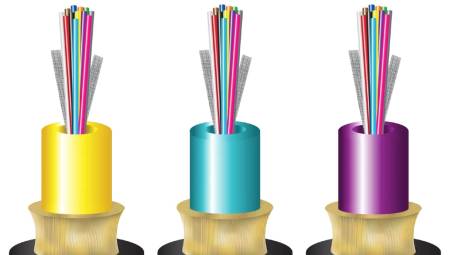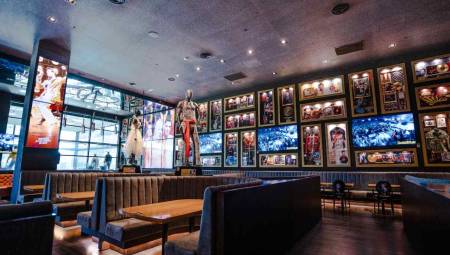Latin America. How do you say goodbye to a legend? For the creative team involved in designing the production of Daddy Yankee's La Ultima Vuelta tour, the answer was quite simple: you create something "fit for a king."
This was the directive that production designer Rodrigo Proal of Darmah Studios received when he was asked to work on the Puerto Rican superstar's official 84-date retirement tour of North and South America, which concluded with a January show in San Juan.
Proal, along with a talented and inspired creative team, didn't disappoint either; the production they collaborated on, with its bold, vibrant colors, intense aerial effects, beautiful scenic elements, and evocative video content created by screen director Bianca Moncada, did justice to the career of a genius credited with coining the term "reggaeton," and whose 2004 party favorite, "Gasolnina" introduced modern Latin music to a wider audience.
"This was a special experience for all of us, one we will never forget," said Felix Peralta, the tour's lighting. designer. "We all wanted this show to be worthy of a king to honor an artist who ruled so brilliantly for so long."
For Peralta, the concept behind La Ultima Vuelta ("The Final Turn") began three years before the tour, when he joined Darmah's team and lighting designer John Daniels, a lifelong friend and mentor, as lighting director/programmer in residence for Daddy Yankee's 14 shows in San Juan.
"As a production designer, Rodrigo created an elegant and clean architectural structure for that residence," Peralta said. "That would be the canvas for the production and, after being reinvented as a touring platform, it set the tone for La Ultima Vuelta.
Peralta and lighting director/programmer, Chris Fernandez, accentuated the clean lines of the production design and set the mood for a magical journey through Daddy Yankee's storied career, with lighting equipment including 240 Chauvet Professional fixtures, supplied on the U.S. stage by 4Wall Entertainment.
"Chris and I approached this tour like a two-headed monster, scheduling the show together," Peralta said. "Chris understands the aesthetics of my design. I have been a mentor to Chris for many years and was very excited to collaborate on this. Inspired by what Rodrigo had presented, we took an architectural approach to illuminate the shows. Our goal was to create something that was simple in concept, but certainly not simple to execute. We wanted it to serve almost as a 'palette cleaner', so we could move from one song to another and tell a story with Bianca Moncada's video and our lighting."
To achieve this, Peralta and Fernández divided their lighting design into three levels of staging. The first was at the back of the stage, behind the broken walls of "Vanish Video," where they started their show and returned again and again throughout the performance. Next was the Main Stage area in front of the screens, where Daddy Yankee and the dancers did much of the show. Finally, came Stage B, affectionately nicknamed "The Basement", where the legendary star came to approach the audience.
Many of the platform's 175 high-performance Color STRIKE M motorized strobes were placed behind the video screens. Projecting white and colored light through the screens, the light helped create a more welcoming environment on stage by weaving the transformative video images throughout the productions.
 The images on the video walls were, in a word, transformative, captivating not only the eye, but also the heart, and created a powerful sense of Daddy Yankee's career traveling through time. In one memorable moment, there is a scene where Darmah's team created a "landing" sequence for Daddy Yankee and his private jet. After the plane begins to appear in the distance, the illumination increases the energy level as it approaches. Finally, the plane "lands" and its door, which was actually behind the Vanish screen, opens and Daddy Yankee exits the wing of the plane to sing the first half of "Champion", a great show. Then the dancers appear and perform on the opposite wing.
The images on the video walls were, in a word, transformative, captivating not only the eye, but also the heart, and created a powerful sense of Daddy Yankee's career traveling through time. In one memorable moment, there is a scene where Darmah's team created a "landing" sequence for Daddy Yankee and his private jet. After the plane begins to appear in the distance, the illumination increases the energy level as it approaches. Finally, the plane "lands" and its door, which was actually behind the Vanish screen, opens and Daddy Yankee exits the wing of the plane to sing the first half of "Champion", a great show. Then the dancers appear and perform on the opposite wing.
"Our lighting team has been working closely with Rodrigo, Bianca and the rest of the group at Darmah Studios for over a decade, integrating the video and lighting elements for live and televised events, which helped set us up for success with 'La Ultima Vuelta,'" said Peralta. We did a pre-visualization production in Miami, in mid-July, at Darmah Design Studios. Bianca worked closely with us to define a well-balanced integration of lighting and video elements throughout."
In addition to contributing to these stunning video moments, the Color STRIKE M units served a variety of other functions during the show. "They were our big hitters," Peralta said of the games. "Basically, we treat them as three separate accessories... a basic strobe, a 14-pixel RGB strobe plate and a 28-pixel beam strobe decorative piece.
We found moments for the 'heavy-handed' accents with the dynamic RGB/CMY pixel to be a fun story, the essential grain beam pixels added beautiful accents to the musical story."
The 45 COLORado PXL Bar 16 luminaires in the equipment were used to create light curtains throughout the show, while the other CHAUVET Professional units, 20 Maverick MK3 washes, served as side lights for the dancers, both in the main part and in the B part.
Versatile accessories and a very realistic looking video wall were not the only reasons why La Ultima Vuelta captivated the audience night after night, there was also the tireless collaboration by a large group of creatives. In addition to praising the team of Darmah and Chris Fernandez, Peralta praised the work of Mike Smrka, the tour's lighting director, who was there doing stellar work at each show.
"People made this show special," Peralta said. "It's something I'll always remember."



